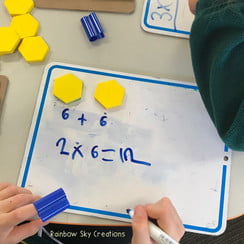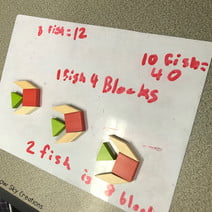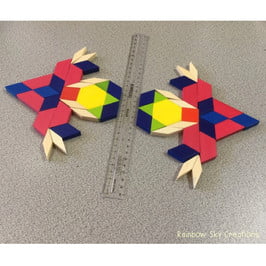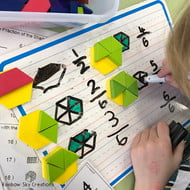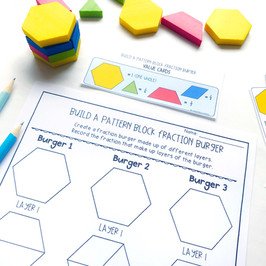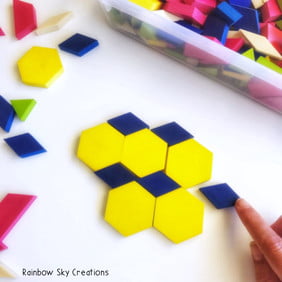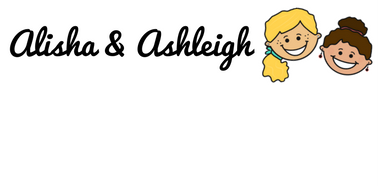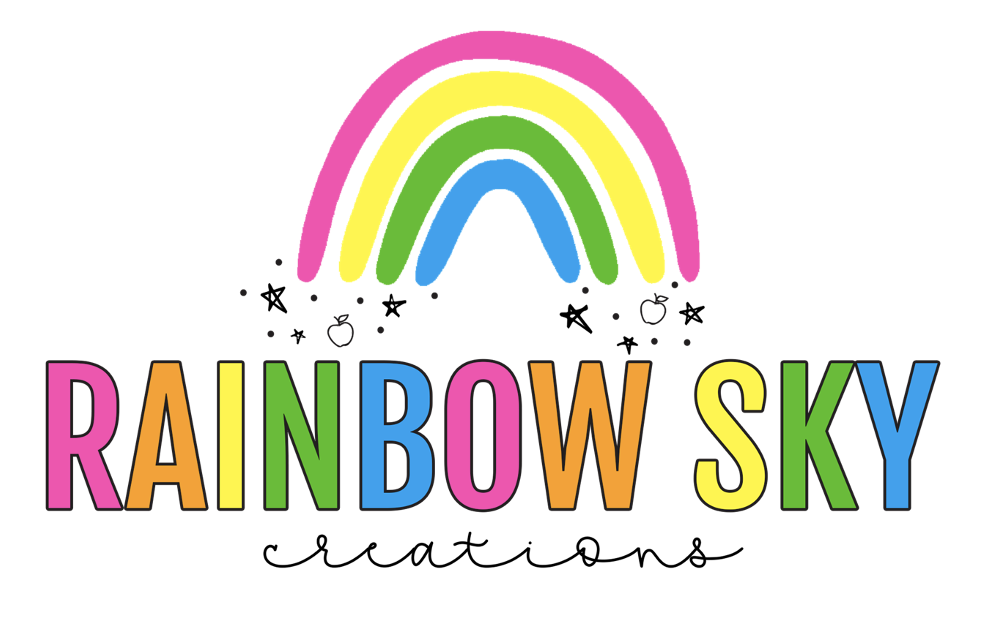During my first year of teaching, I was lucky enough to receive my own set of classroom pattern blocks. I had helped out one of my teaching mentors by taking photos for an upcoming teaching resource, and my payment was a fantastic collection of hands-on resources. You know you’re a full-fledged teacher when brand-new maths manipulatives look more appealing than money in the bank.
Pattern blocks have become a staple manipulative in my classroom, and I have found them useful to support various concepts in Math beyond patterning.
In honour of the pattern blocks that have been well-loved and provided hours of learning over the years.
Here are 7 ways you can use pattern blocks for hands-on math lessons in your classroom.
1. Multiplication (Repeated Addition)
I found using pattern blocks was a great way to introduce multiplication to students as repeated addition. Students count the number of sides as the value of the shape, so choosing 3 triangles would be 3 + 3 + 3 = 9. From there, students can build on their understanding and apply 1 triangle has 3 sides (1 x 3), so 3 triangles would have 3 lots of 3 sides equalling 9 (3 x 3). This was a great activity with my middle primary students to build their number fluidity with the 3, 4 and 6 times tables.
2. Missing Numbers (Pre-algebra)
Students can use the patterns blocks to represent a missing number. For example 19 – 🔷= 12. Provide students with mini whiteboards and in pairs they can create number sentences using any of the four number operations. This activity is an excellent way to consolidate students understanding when applying the inverse of each number operation.
3. Growing Patterns
Present students with the challenge of making a shape, for example, a fish in under 1 minute using only patterns blocks. Once completed, students count the number of blocks needed to make the pattern. Students then create the same fish and record the number of blocks necessary for both fish.
Before you know it students have created a growing pattern by making a 3rd and 4th fish. From there, students will be able to identify the rules of the pattern. Now they know the rule, can they calculate the 10th term or the 20th, 50th, or 100th term? You can mix up this activity by allowing students to move around the classroom and take turns building on classmates’ patterns. Once students get a chance to see others patterns, they’ll be pointing out the different rules and working out what comes next.
4. Symmetry
Pattern blocks are ideal for so many geometry lessons. All you need is a ruler and a handful of patterns blocks. In pairs, students create a pattern on one side of the ruler. Once time is up, students swap over and complete their partner’s pattern. If you happen to have some additional mirrors, the final step could be to use the mirror to check the other side is symmetrical or students can assess each other’s ability to make a symmetrical pattern. To make it more challenging students can use two rulers to form a cross. This time students must create a pattern which has two lines of symmetry.
5. Informal measurement
This idea is excellent for the early years when teaching measurement. Give students one shape to use as an informal unit when measuring the length of different objects. For example, my book is 8 hexagons in length. Students could work together to create a class book showing different objects with the same informal unit. For example, this pencil, book and shoe have a length of 3 hexagons.
6. Fractions
You probably have seen pattern blocks used for teaching fractions! Yes, I agree patterns blocks are an ideal hands-on resource for teaching equivalent fractions. I like to start simple with a hexagon having the value of 1. How much would the trapezium be worth? A blue rhombus? A triangle? Does the square have a value? The last question requires students to justify their mathematical thinking and allows you to pinpoint who understands what makes two fractions equivalent. You can increase the complexity of this task by changing the value of the shapes. What is the hexagon worth if a triangle = ½.
You can find this activity in our Hands-on Fractions pack for Year 3 and 4.
7. Tessellations
What makes pattern blocks so versatile is that each shape fits perfectly to one another which makes them ideal for creating tessellations. Start with students creating a simple tessellation using only the square, triangle or the two different sized rhombuses. The next step is to create a tessellating pattern with two different blocks and then how about 3 different blocks or 4 blocks? Watch the beautiful patterns emerge and perhaps one student’s design could be perfect for when you are retiling your bathroom or kitchen.
Extra tip: It can be hard following up on students hands-on learning. I found the easiest way for me to monitor my students learning that wasn’t on a worksheet was by using tablets or devices. Even if you only have one or two in your classroom this way is still achievable.
I hope these ideas have given you some inspiration or alternative ways to use pattern blocks in your classroom.
We are always interested in hearing of any other ideas you may have when using such resources at Rainbow Sky Creations. So stop by and have a chat with us on Facebook or Instagram.
What to read next…
Using number racing tracks as a quick counting warm-up in the classroom.
8 ways to use Number of the Day
